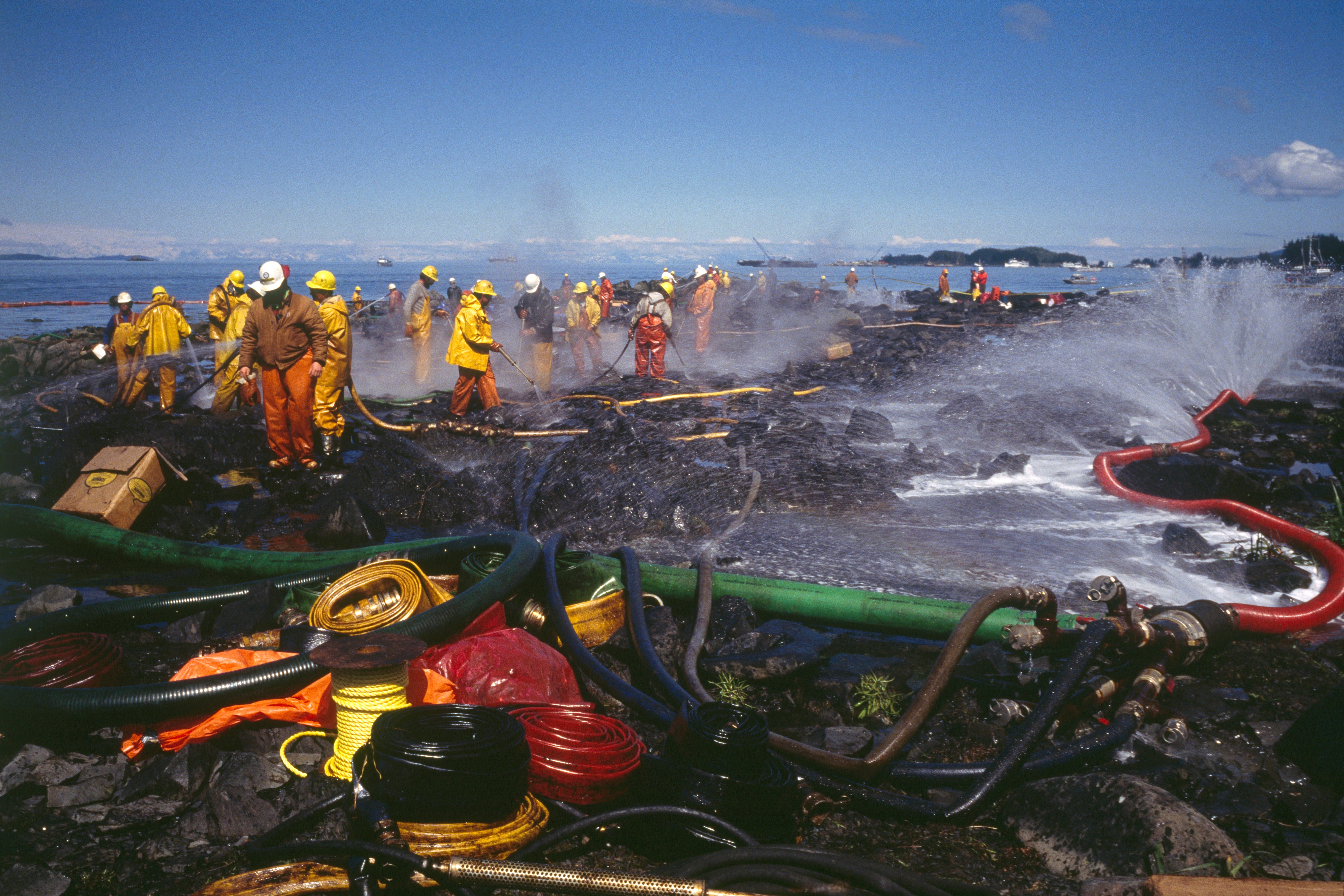
[ad_1]

In March, when President Biden approved the Willow project, an $8 billion plan for ConocoPhillips to extract 600 million barrels of oil from federal land in Alaska, it brought to mind a long-dormant memory from my childhood—one from March 1989, when I watched the Exxon Valdez oil spill unfold on the nightly news from my home in Southeast Alaska.
I was just eight years old, but the images made a lasting impression on me: birds, seals and other wildlife suffocating in oil; miles of once pristine shoreline painted black by waves of crude; and oil company executives hiding behind lecterns, assuring Alaskans that they would take responsibility for the spill, which nevertheless dragged on as at least 10.8 million gallons of poisonous cargo bled from the crippled tanker into the sea. It became clear to me then, even as a child, that nothing could be worth the price Alaskans paid for Exxon’s recklessness. Decades later, the toll lingers in traces of the spill that remain in Prince William Sound, where some wildlife populations—orcas, for example—have never recovered. Patches of oil can still be found just beneath the surface of some beaches and waterways.
What I couldn’t see until recently was just how cheaply we tend to sell our most precious resources. To bolster support for the Willow project, Senator Lisa Murkowski, a Republican from Alaska, has touted the 2,500 jobs she says its construction will create. And while many Alaskans support oil drilling precisely because it creates jobs, the economic impact is far from what real, long-term investment in state economies looks like; in Washington state, Amazon and Microsoft have created a booming tech economy, and in Oregon, Nike and Intel employ more than 30,000 local people between them. Meanwhile, industry-wide statistics suggest these 2,500 new oil jobs will inordinately go to white men, some from out of state, despite the fact that Native Americans and Alaska Natives experience poverty at a rate that is more than double the state average in Alaska.
Biden approved the Willow project despite an unambiguous campaign trail promise that there would be “no more drilling on federal lands, period.” The logic of this about-face is rooted in the same kind of geopolitics that have been used to justify every previous attempt at drilling for oil in Alaska. This dates to 1958, when British Petroleum surveyed Alaska’s Brooks Range looking for oil reserves to use as a hedge against its holdings in potentially unstable areas of the Middle East. The oil giant subsequently took out leases on large swaths of Alaska’s North Slope, but had trouble with transportation until 1973, when an oil embargo created the political and economic conditions necessary for pushing through approval of a Trans-Alaska Pipeline System. Once constructed, the pipeline carried crude overland across 800 miles of tundra and permafrost, from a drilling site at Prudhoe Bay to the Port of Valdez. The first drops reached the Valdez Marine Terminal on July 28, 1977, and by March of 1989, it was flowing at a rate of about two million barrels per day—more than a quarter of America’s domestic crude oil production, extracted from a landscape so remote that oil companies could get away with treating it as a veritable colony.
One way of understanding the Exxon Valdez oil spill is to see it as a consequence of this tendency to treat Alaska as a corporate fiefdom for extractive industries. Another is to see it as a symptom of a much larger problem. At the precipice of a global climate catastrophe, it’s clear now that every major oil spill was an invitation to reckon with our collective ambivalence towards an industry that could hardly be less sustainable or more harmful. We failed to do this because it was easier to imagine ourselves as powerless—as blameless and helpless as a bird drowning in oil. Holding onto this delusion, however, will soon require more than turning away from the television screen; with each passing day, our climate doom becomes easier to imagine and harder to ignore. Waiting for the next tipping point makes no more sense than waiting on the next oil spill. If the Willow project moves forward, I fear, the prospect for reversing our climate fortunes will die in Alaska.
It has never been clearer how greatly our future depends on reducing our reliance on fossil fuels, and yet Biden has made unnecessary concessions to an oil industry whose own researchers have long known that their profits are tied to our collective climate doom. Legislation like the Inflation Reduction Act is mere window dressing: the U.S. remains the largest producer of oil and gas in the world, and last year, in disregard of a 2021 International Energy Agency declaration calling for an immediate end to the building of new fossil fuel infrastructure, we approved more oil and gas expansion than any other nation. Approving new fossil fuel ventures like the Willow project ensures that the U.S. will rely on oil and gas for most of its energy needs by 2050, when it has formally pledged to reach “net zero.” With this in mind, it is tempting to wonder whether any civilization has ever set such a low bar for acting against the greater good in the name of political emergency—and such a high bar for acting on what is probably the most obvious existential emergency in human history.
Instead of an oil spill, I expect to turn on the television one day and learn that we have crossed a climate threshold from which there is no going back. And when that day comes, I know what the oil company executives and politicians will say, because, like all Alaskans who remember what happened in March 1989, I’ve heard it before.
This is an opinion and analysis article, and the views expressed by the author or authors are not necessarily those of Scientific American.
[ad_2]